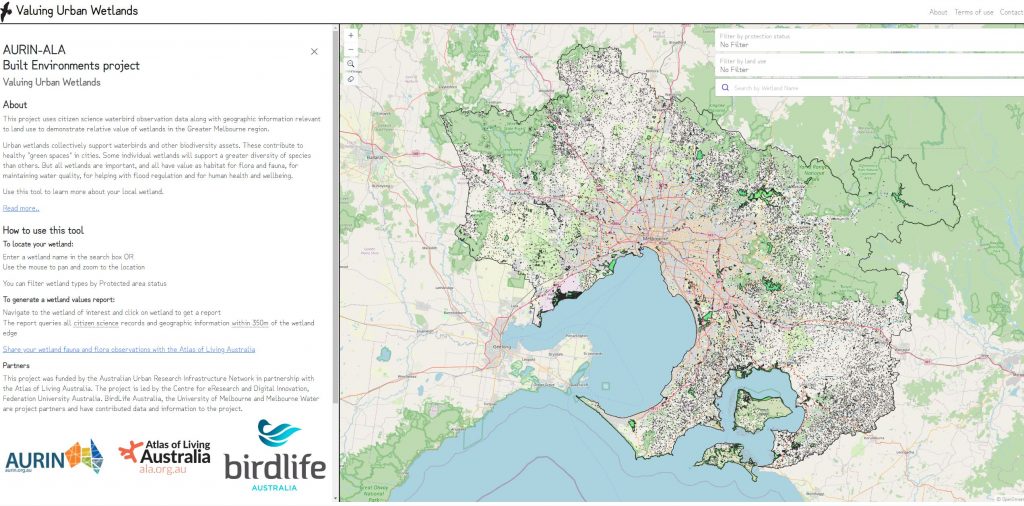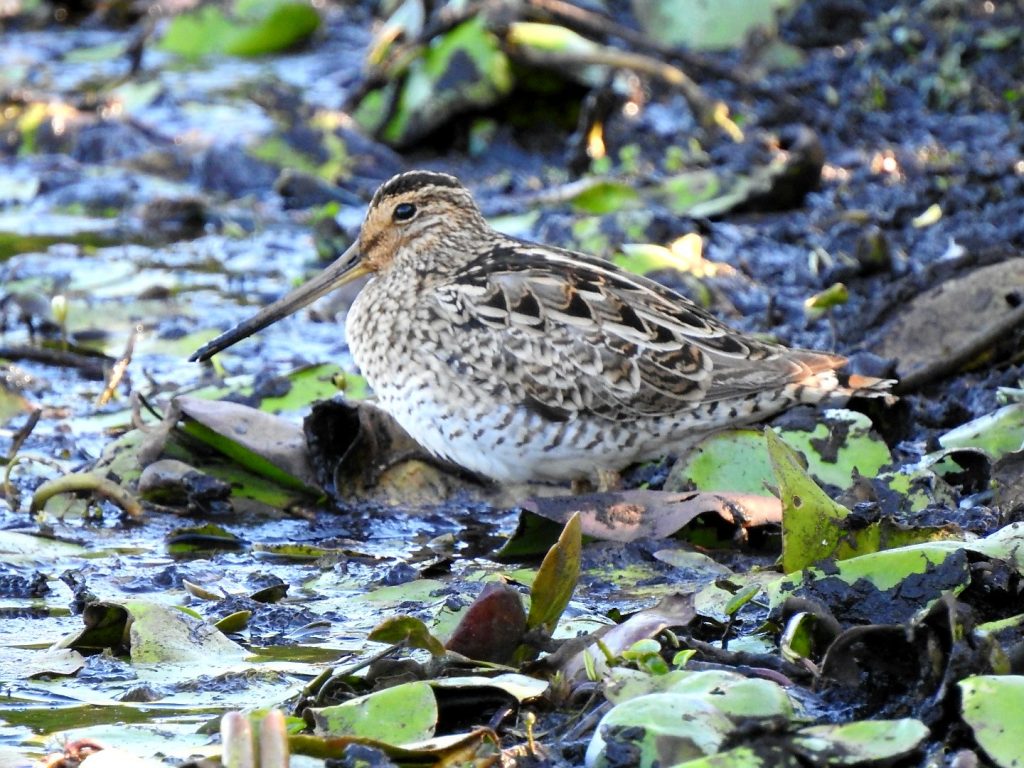Did you know that small bodies of water in your city, like ponds or retention basins, play a crucial role in the environment? These urban wetlands are vital for supporting clean water, healthy ecosystems, and even bird migration. However, urban wetlands are often highly modified or constructed bodies of water, and are therefore seen as less “valuable” from an urban planning lens in terms of biodiversity conservation and ecosystem outcomes.
In a partnership between the Atlas of Living Australia (ALA), the Australian Urban Research Infrastructure Network (AURIN), BirdLife Australia and Federation University, a tool was created to raise awareness of the importance of wetlands in urban environments. The team used open-source citizen-science data to quantify the values of urban wetlands across Victoria, including those that have previously been overlooked. This information was collated into a publicly available online mapping tool, ‘Valuing Urban Wetlands’.
The online tool
The tool integrates waterbird and landscape data through an online portal called ‘Valuing Urban Wetlands.’ Waterbird data collected through citizen science and professional science was accessed via the ALA, BirdLife Australia and eBird and overlayed with open landscape data to create metrics for assessing wetland health and importance. The tool focuses on the Greater Melbourne region, but the methodology can be applied to other regions in the future

Valuing Urban Wetlands online tool interface.
Anyone can access the Valuing Urban Wetlands online portal. You can enter a wetland name or scroll across the map to zoom into an area and click on a wetland of interest to generate an area report. The report will provide a list of all frog and waterbird species present at this wetland (based on the data sources listed above) as well as the number of threatened species for these taxa.

Case study: Latham’s Snipe (Gallinago hardwickii)
Latham’s Snipe is a migratory shorebird that relies on wetland habitats. It breeds in Japan and migrates to Australia for the non-breeding season. It is a cryptic bird and difficult to observe, but research has revealed very high numbers of snipe in some Victorian urban wetlands. Through the online tool developed through this project, wetlands important to support Latham’s Snipe are identified and annual numbers recorded at these wetlands are included in wetland report.
Project Impacts
- Raise awareness of urban wetlands: The project has created a publicly accessible online system that highlights the importance of urban wetlands for biodiversity conservation. This can raise awareness among policymakers, planners, and the general public to give greater consideration to urban wetlands are resources of high biodiversity value.
- Improved decision-making: By providing quantitative data on the value of urban wetlands, the project can inform better decision-making related to land use and development. This ultimately is aimed to lead to better protection of these crucial habitats.
- Standardised metrics: The project has developed a standardised metrics based on citizen-science data for assessing urban wetland value. These metrics can facilitate comparisons across different wetlands and regions.
- Citizen science integration: The project incorporates data from citizen science initiatives like the ALA, Birdlife Australia and eBird. This can empower citizen scientists and contribute valuable data for conservation efforts.
- Improved monitoring of key bird species: Using the Latham’s Snipe as a case study, this project demonstrates the potential for improving understanding of declining species’ distribution and habitat use in urban areas.
”Wetlands in urban areas are often overlooked in protection efforts due to a misconception that they are weedy, littered swamps that have low conservation value. However, they provide important refuge habitat for a range of species in our cities, including the Vulnerable Latham’s Snipe. We developed this tool to help raise awareness of the biodiversity value of small urban wetlands by presenting snapshots of data recorded by citizen scientists,” said Dr Birgita Hansen, Project Lead and Senior Research Fellow at Federation University.
Check out the online tool here. For more information about this project, please reach out to support@ala.org.au or to b.hansen@federation.edu.au.